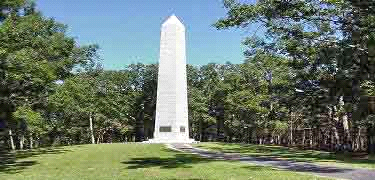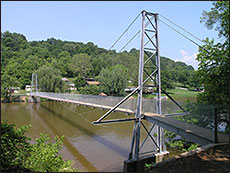Celebrating Victory
Cornwallis Surrender 19Oct1781
Though it took months before a peace treaty was officially signed, the surrender of the British at Yorktown was essentially the end of the Revolutionary War. We have pictures and video of the celebrations of VJ Day at the end of WW II. There were hugs and kisses at the Brooklyn Navy Yard. There was dancing in the streets of Manhattan. We can only imagine the joy and the celebrations of our ancestors when they learned that their risks and sacrifices were ended with the liberty for which they had fought.
But it is not exactly only our imagination. We have some facts recorded on Wednesday 21Nov1781 in Abingdon, Virginia. The county seat of Washington County, when it encompassed the eight southwest Virginia surrounding counties, held its first business session after Cornwallis’ surrender on Tuesday 20Nov1781. County commissioners Arthur Campbell, James Dysart, John Kinkead, Robert Craig, James Fulkerson, and Joseph Black appointed a grand jury: William Scott, foreman, John Berry, Thomas Berry, Alexander Breckenridge, George Edgar, Andrew Davis, David Getgood, James Logan, James Herrald, Robert Preston, William McMullen, James Craig, Samuel Duff, James Carswell, George Finley, William Gilmore, Charles Hays, Samuel Edmondson, Simeon Cotrell, and John Dinkins. In the afternoon, they returned their findings and the magistrates adjourned until the next morning. They needed a night to rest, regain their breath, and re-organize before considering the bill of indictments.
Wednesday at eight o’clock, only Arthur Campbell, John Kinkead, and Robert Campbell reconvened the court. Magistrates James Dysart, Robert Craig, James Fulkerson, and Joseph Black from Tuesday’s session were not behind the bench. The grand jury presented indictments:
Alexander Smith, adultery with Jane Gibson
Joseph Young, horse racing
James Douglas, horse racing
Evan Evans, horse racing
Thomas Gross, misprision
Daniel Young, breach of the peace
Col. John Smith, breach of the Sabbath
Andrew Colville, horse racing
Henry Graham, horse racing
John Young, horse racing
Archibald Brumley, horse racing
James Dysart, horse racing
Joseph Snodgrass, horse racing
Hugh Johnston, horse racing
Major David Campbell, horse racing
Henry Skaggs, adultery with Nancy Davis
Aaron Skaggs, adultery with Susan Lyons
Sarah Kennedy, fornication
Mary Pierce, fornication
William Robinson, neglect of the road
Daniel Young, neglect of the road
John Funkhouser, neglect of the road
James Piper, neglect of the road
William Beaty, neglect of the road
Widow James, Fornication
The magistrate ordered that process issue against these persons.
These indictments indicate that not a few people were openly celebrating. We might imagine how many were not caught or how many witnesses to other offenses were embarrassed or intimidated from testimony to the grand jury. It would be interesting or amusing to learn how many other charges were brought which did not yield indictments. Further, these were around Black’s Fort in Abingdon. Maiden Fort, Martin’s Station, and other Washington County gatherings might also have had their celebrations beyond the sight of allegations and complaints to the magistrates.
A year earlier, the men had returned from a resounding victory at Kings Mountain but there was no celebration. There was an immediate alarm to head to the French Broad with John Sevier. There were yet other battles to win. Governor Nelson continued the calls for more soldiers. Elizabeth Moore rode toward Widow Biggerstaff’s to locate her wounded husband. A few soldiers were still around Greenlee’s Ford recovering from wounds. The court took up the immediate business of estate settlements for those who would never return to their earthly homes. They made provisions for widows and orphans and planned support for the wounded.

The scene around the courthouse included Joseph Black’s second fort built large enough to shelter as many as six hundred from Indian uprisings. His “little fort” was a blockhouse in
the SW corner of Uncle Andrew Colville’s farm across Wolf Creek from Thomas Caldwell. Black built the little fort, later called “Newell’s Improvement” for his mother, Mrs. Elizabeth Colville Black Newell on her brother’s farm so that they could care for three orphaned nephews of their brother Samuel Colville and wife Agnes.
The reconstructed Boonesborough fort might be a picture similar to Blacks Fort where folks coming to town might yet camp or find lodging during quarterly court sessions. It had been the courthouse until construction of county jail and court buildings was completed. Also convenient to Washington County court house were two “ordinaries.” They were restaurant, tavern, bed and breakfast gathering places within sight of the court house. The oldest surviving building, the old Abingdon Tavern across the street from WCCH, was operated by Christopher and Christian Acklin. She was Joseph Black’s sister. The fort and tavern could have been the site of some of the celebratory offenses.
Perhaps the “fighting parson” Charles Cummings held confessionals before and/or after the Wednesday evening prayer service at Sinking Spring Presbyterian gathering place (not quite yet a legal church). Some of his flock, including elders, had been charged. Their fines could challenge their tithes.
Absences from the bench were not insignificant. James Dysart was sheriff and militia officer. Captain Robert Craig’s brother in law, next door neighbor Captain Andrew Colville, was charged. Captain Joseph Black’s uncle Andrew Colville and some of his company, friends, and neighbors were charged. Though no explanation was stated, we might guess that they were recusing themselves.
Rank has its privileges, but did not excuse men of high office from indictment. In addition to Colville and Dysart, David Campbell was charged. There were multiple David Campbell’s in Abingdon at the time and we cannot be certain which was the Major Campbell who was indicted. Let’s guess that he was the Kings Mountain veteran who clerked the Fincastle Resolutions and clerked for General William Blount before becoming justice of the Tennessee Supreme Court.
The rationale for horse race charges is uncertain. It was well known that Col. John Sevier would be at a horse race before the Kings Mountain muster. That was how Col. Isaac Shelby located him. Possible reasons could be endangering horse flesh, running in a place where pedestrians might be endangered, running for keeps, RWI (running while intoxicated) or gambling on the results.
For all things under heaven, there is a time and a place. Celebrations were not banned. Nobody was charged for kissing maidens, dancing with wives, or hugging widows. The grand Abingdon celebration of Cornwallis’ surrender must have been in the league with Mardi Gras in New Orleans.








